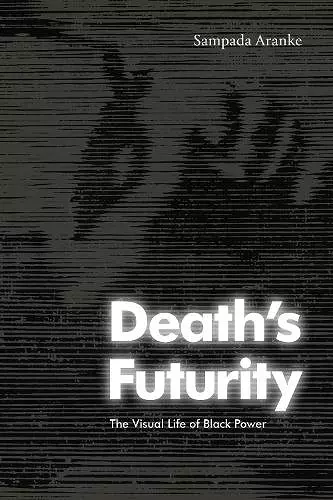Death's Futurity
The Visual Life of Black Power
Format:Paperback
Publisher:Duke University Press
Published:24th Feb '23
Should be back in stock very soon
This paperback is available in another edition too:
- Hardback£83.00(9781478016663)

In Death’s Futurity Sampada Aranke examines the importance of representations of death to Black liberation. Aranke analyzes posters, photographs, journalism, and films that focus on the murders of Black Panther Party members Lil’ Bobby Hutton, Fred Hampton, and George Jackson to construct a visual history of the 1960s and 1970s Black Power era. She shows how Black radicals used these murders to engage in political action that imagined Black futurity from the position of death. Photographs of Hutton that appeared on flyers and posters called attention to the condition of his death while the 1971 documentary The Murder of Fred Hampton enabled the consideration of Hampton’s afterlife through visual meditations on his murder. Printmaking and political posters surrounding Jackson’s murder marked the transition from Black Power to the prison abolition movement in ways that highlighted the relationship between surveillance, policing, incarceration, and anti-Black violence. By foregrounding the photographed, collaged, filmed, and drawn Black body, Aranke demonstrates that corporeality and corpses are crucial to the efforts to shape visions of a Black future free from white supremacy.
"The author’s close readings of the role of visual artifacts in generating consciousness, agency, and a sense of futurity about a better future in their audiences is both compelling and original, and her engaging prose makes it a pleasure to read." - Simon Stow (European Journal of American Studies) "Aranke provides a lyrical and materially nuanced account of how the Black Panther Party for Self-Defense mobilized a range of visual media, objects, and tactics. . . . In the process, Aranke not only reorients our understanding of 'the political' in art of the 1960s, but also puts tremendous pressure on art-historical conceits such as 'the curatorial,' which in the Panthers’ hands does not mean protecting priceless artworks within neoliberal institutions, but rather involves preserving the bloodstained objects left in [Fred] Hampton’s apartment in order to make visible the anti-Black violence that enables the coherence of American 'civil society" and the ongoing expansion of the carceral state undergirding it." (Artforum) "Aranke demonstrates a keen awareness of the politics of looking, production, and consumption of images of Black death. . . . Death’s Futurity provides a model for describing images that feels implicitly in service to a larger project producing scholarship around traumatic scenarios without being unnecessarily graphic." - Les Gray (Theatre Journal)
ISBN: 9781478019305
Dimensions: unknown
Weight: 363g
232 pages